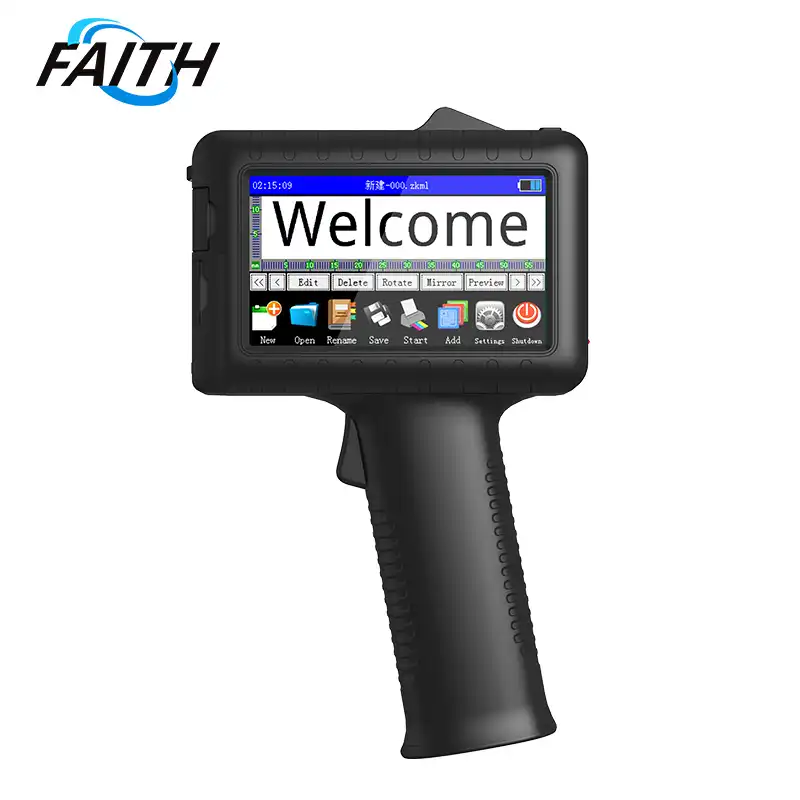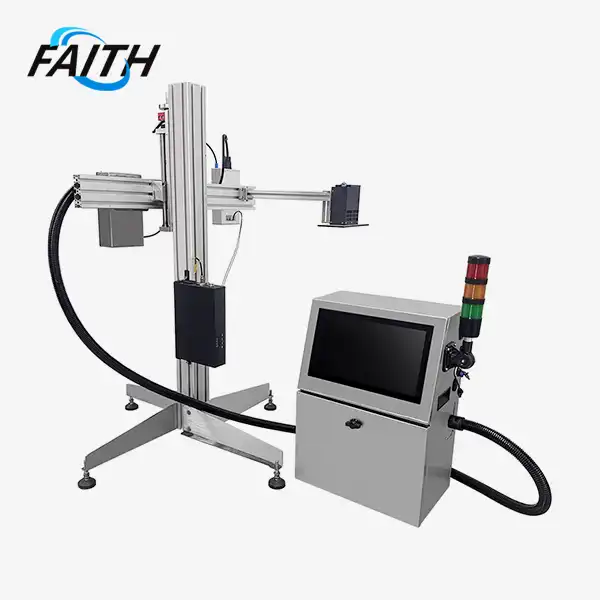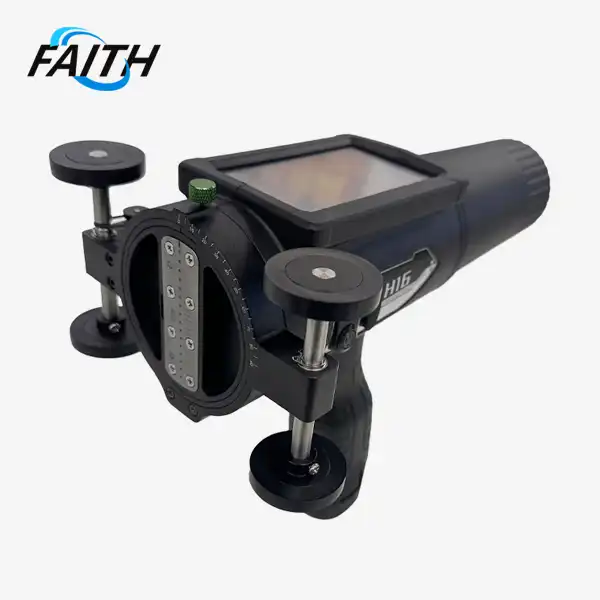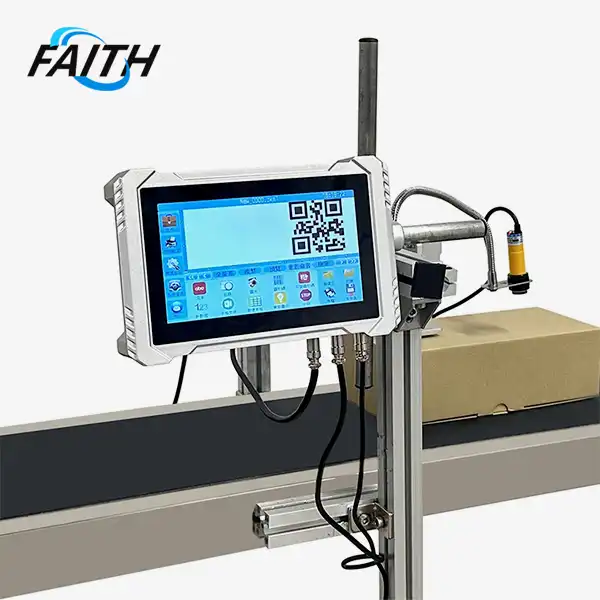CIJ vs. Other Printers: Which One’s Right for You?
In the world of industrial printing, choosing the right technology can make or break your production line's efficiency. Among the myriad options available, CIJ continuous inkjet printer stands out as a versatile and reliable choice. But is it the right fit for your specific needs? Let's dive into the world of CIJ and compare it with other printing technologies to help you make an informed decision.
Comprehending CIJ Technology: The Powerhouse of Industrial Printing
Continuous Inkjet (CIJ) printing is a non-contact printing method that has revolutionized industrial coding and marking. At its core, CIJ technology utilizes a high-pressure pump to create a continuous stream of ink droplets. These droplets are then precisely controlled and directed onto the substrate to form the desired text, codes, or graphics.
The magic of CIJ lies in its ability to print on a wide variety of surfaces, including both flat and curved materials. This versatility makes it an ideal choice for industries ranging from food and beverage to pharmaceuticals and automotive parts manufacturing. One of the key advantages of CIJ printing is its remarkable speed. A typical CIJ printer can generate up to 120,000 droplets per second, allowing for high-speed printing that keeps pace with even the fastest production lines. This speed, combined with its non-contact nature, ensures that CIJ can maintain print quality without slowing down your operations.
Moreover, CIJ continuous inkjet printers excel in producing durable codes. By selecting the appropriate ink formulation, you can ensure that your prints withstand harsh environments, including exposure to chemicals, abrasion, and extreme temperatures. This durability is crucial for industries where traceability and product identification are paramount.
CIJ vs. Other Printing Technologies: A Comparative Analysis
While CIJ has its strengths, it's essential to understand how it stacks up against other printing technologies. Let's compare CIJ with some popular alternatives:
- CIJ vs. Thermal Inkjet (TIJ): TIJ printers are known for their simplicity and low maintenance requirements. However, they often struggle with printing on non-porous surfaces and have limitations in terms of print durability. CIJ, on the other hand, offers greater versatility in substrate compatibility and produces more durable prints.
- CIJ vs. Laser Marking: Laser marking systems provide excellent print quality and permanence but come with higher initial costs and potential safety concerns. CIJ printers are generally more cost-effective and easier to integrate into existing production lines, especially for high-speed applications.
- CIJ vs. Thermal Transfer Overprinting (TTO): TTO excels in producing high-resolution prints on flexible packaging materials. However, it requires direct contact with the substrate and consumable ribbons. CIJ offers non-contact printing and lower ongoing consumable costs, making it more suitable for certain applications.
- CIJ vs. Large Character Marking: While large character markers are ideal for printing sizeable text on corrugated boxes, they lack the versatility and fine detail capabilities of CIJ continuous inkjet printers. CIJ can handle both small and large character printing, offering more flexibility in a single system.
Each of these technologies has its place in the industrial printing landscape. The choice ultimately depends on your specific requirements, including substrate types, production speeds, and environmental factors.
Choosing the Right Printer: Factors to Consider
Selecting the optimal printing solution for your business involves careful consideration of several factors:
- Substrate Compatibility: Consider the materials you'll be printing on. CIJ printers are highly versatile, capable of printing on various surfaces such as plastics, metals, glass, and more. Their adaptability makes them an excellent choice for diverse applications, ensuring high-quality prints across different materials with ease and precision.
- Production Speed: If you're overseeing high-speed generation lines, CIJ printers' capacity to keep up reliable print quality without abating down can be a key advantage. Their speed and accuracy guarantee that indeed in fast-paced situations, the print comes about stay clear and exact, making them a significant resource for proficient generation forms.
- Print Durability: In industries where product traceability is essential, CIJ printers offer a key advantage with their ability to produce durable prints that endure harsh conditions. This ensures that markings remain legible and intact, even in demanding environments, supporting reliable tracking and compliance.
- Operational Costs: While initial investment is important, also consider long-term operational costs, including consumables and maintenance. CIJ continuous inkjet printers often offer competitive total cost of ownership.
- Ease of Integration: CIJ printers are recognized for their seamless integration into existing production lines, minimizing disruption during setup. Their compatibility with current systems allows for smooth implementation, ensuring a quick transition without significant downtime, enhancing overall efficiency and productivity.
- Environmental Considerations: If your production environment involves extreme temperatures or exposure to chemicals, CIJ printers' durability becomes a critical factor. Their robust design ensures reliable performance in harsh conditions, providing consistent, high-quality prints even in challenging environments, making them an ideal choice for demanding applications.
- Regulatory Compliance: Make sure the printing solution you select complies with all relevant industry regulations and standards, especially in sectors like food and pharmaceuticals. Adhering to these requirements ensures safety, quality, and compliance, minimizing risks and meeting the necessary guidelines for each specific industry.
Conclusion
In conclusion, while CIJ continuous inkjet printer offers numerous advantages, including versatility, speed, and durability, the best choice depends on your unique requirements. We at Shenyang Faith Technology Co., Ltd. specialize in providing tailored industrial UV inkjet coding and traceability system solutions. Our team of experts can help you navigate the complexities of choosing the right printing technology for your needs. If you're looking to optimize your production line with state-of-the-art printing solutions, we're here to help. Contact us at sale01@sy-faith.com to discuss how we can elevate your printing capabilities and streamline your operations.
References
1. Knutson, K. (2019). "Industrial Inkjet Printing: Technologies and Applications." Journal of Imaging Science and Technology, 63(5), 050201-1-050201-11.
2. Smith, R. L. (2018). "Comparative Analysis of Industrial Printing Technologies: CIJ, TIJ, and Laser Marking." International Journal of Industrial Engineering, 25(3), 312-328.
3. Johnson, A. M., & Brown, T. E. (2020). "Advancements in Continuous Inkjet Technology for High-Speed Manufacturing." Industrial Printing Review, 42(2), 78-92.
4. Thompson, L. K. (2017). "Cost-Benefit Analysis of Modern Coding and Marking Systems in the Food and Beverage Industry." Journal of Food Processing and Technology, 8(11), 701-709.
5. Rodriguez, M. A., & Lee, S. H. (2021). "Environmental Impact Assessment of Industrial Printing Technologies: A Life Cycle Approach." Sustainability, 13(9), 4972.
Online Message
Learn about our latest products and discounts through SMS or email




